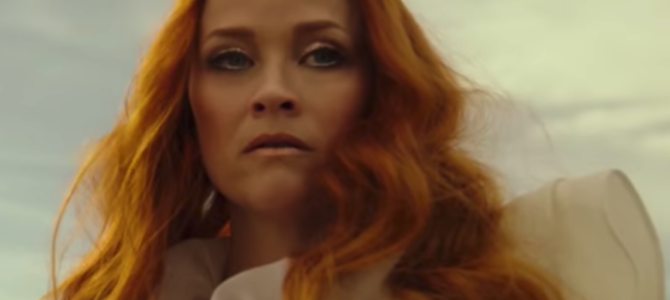
Madeleine L’Engle’s classic young adult novel “A Wrinkle in Time” is the latest victim of diversity-deranged stunt casting in which no respect is paid to the race or sex of existing literary characters. But that’s only one reason why this frustrating fiasco is such an embarrassing failure. Director Ava DuVernay (“Selma”), who has no feel at all for the material, seems more interested in promoting colorblind multi-culturalism than producing an entertaining adaptation that is worthy of its much-beloved source.
Although movies featuring original characters whose physical attributes have been unspecified elsewhere are legitimate equal-opportunity roles for any actors, deviating from already established characters turns a project into either a sort of alternative-reality racelifted remake (the black-cast versions of “Annie” and “Steel Magnolias”), a re-imagined novelty (“The Wiz”), comic exploitation (“Blacula”) or a display of randomly colorblind inclusiveness (a black Human Torch in the most recent “Fantastic Four”). All of those swaps are distracting enough to seem like gimmicks, even if an appearance-miscast actor gives an otherwise adequate performance.
Teenage Meg Murry and her mother, both white like the rest of their family in the 1962 “A Wrinkle in Time” novel, are portrayed in this film version by black actresses Storm Reid and Gugu Mbatha-Raw. Dad is played by Caucasian Chris Pine. Because Meg’s precocious younger brother Charles Wallace is played by Filipino-American Deric McCabe, this results in the absurdity of the character now being identified as adopted, presumably because it would be hard to believe he could be the product of Mbatha-Raw and Pine’s union. Twin brothers from the book are missing entirely from the movie, which may be a blessing, considering that political correctness probably would have dictated they be played by a Native American dwarf and a disabled transsexual.
The irony of making changes like these to a book in which Meg herself states that “like and equal are not the same thing at all” apparently was lost on those responsible. (Then again, the line does not appear in the movie, possibly because the filmmakers knew they had sabotaged said theme.) Also, it’s unfortunate that the film eliminates the novel’s references to Christianity that resulted in it being banned from some libraries. Inclusion apparently has its limits.
Changing Meg and her mom’s race may have been DuVernay’s attempt to promote the illusion of a universe in which such changes don’t and shouldn’t matter, but that aim is subverted by moments that take on unintended meanings in this new context. Meg’s white friend Calvin (Levi Miller) twice mentions that he likes her hair, which is a huge explosion of curls. Coming from a white boy to a black girl, the compliment has a different implication than if both teens were white. Similarly, when Meg is shown a vision of an idealized makeover of herself that she could become if she gives in to nefarious temptation (a scene not in the book), the fact that her doppelganger’s hair is unnaturally straight and flat comes off like a racist insult to the hair she was born with.
While “whitewashing” conversions of any character to Caucasian are routinely criticized (such as white Natalie Portman’s recent “Annihilation” portrayal of that novel’s half-Asian lead), changing any white character to black apparently is supposed to be regarded as a refreshing redress of historic racist wrongs. That kind of mindset makes it easy to see why the source of pure evil in “A Wrinkle in Time” never is referred to as The Black Thing or The Dark Thing, as it is in the book.
The basic plot sends Meg, Calvin and Charles Wallace on a quest to find her long-missing dad, with the help of three supernatural beings. But the screenplay (by Jennifer Lee and Jeff Stockwell) contains so many annoyingly unnecessary deviations from the novel that it almost could be mistaken for an unauthorized pastiche that attempts to alter just enough details to avoid a plagiarism suit.
A female character known as the Happy Medium in the book is now male (Zach Galifianakis). Calvin’s abusive mother is now an abusive father. Meg’s father has been missing for four years instead of two. A character transforms into a flying green leaf-creature instead of a winged white centaur. Instead of taking place in an imposingly grim office building, an encounter with the evil “man with red eyes” (Michael Peña, known here simply as Red) takes place on a sunny, umbrella-crowded beach.
The movie completely ignores L’Engle’s creepy description of the book’s main villain as an oversized, disembodied brain. Even the ending is altered — mild spoiler alert — by having Meg rely upon another character’s feelings toward her, instead of triumphing solely by expressing hers toward him.
Also new is the idea that Meg’s mother is given more credit than her father for the scientific theories that led to “tessering,” or instantaneous space-time travel. In the book, dad and a half-dozen cohorts are the ones who were working on that project, while mom only has doctor degrees in biology and bacteriology … which apparently didn’t make her enough of a credit-deserving superwoman for today’s #TimesUp audiences.
The book’s three supernatural “Mrs.” characters — Mrs. Whatsit, Mrs. Who and Mrs. Which, who transport Meg and company through space-time — are as multi-culti as the rest of the cast. Mrs. Who is Mindy Kaling, whose parents are from India. White Reese Witherspoon’s age and red tresses directly contradict the book’s description of Mrs. Whatsit’s “sparse quantity of grayish hair.” And Mrs. Which, a shimmer who takes the form of “a figure in a black robe and a black peaked hat, beady eyes, a beaked nose and long gray hair” clutching a broomstick in the book, is embodied here by Oprah Winfrey in disco glitter mascara and lipstick. Because of course.
It’s probably rude to criticize a 14-year-old for being lifelessly dull even when she tries acting defiantly spunky, but Reid is missing whatever charisma would have been required to make Meg appealing. Like everyone else here, she seems to be going through the motions without much involvement. Pine is saddled with what may be the movie’s most cringeworthy not-from-the-book dialog, however. At one point, he tells Meg, “I wanted to shake hands with the universe, when I should have been holding yours.”
A yellow brick backyard pathway and an otherworldly twister (neither from the book) presumably are attempts to evoke “The Wizard of Oz,” which is like slapping Ferrari decals on a 1971 Pinto. Also, forget about giving what should have been called “A Waste of Time” a pass because it might be good enough for kids. “A Wrinkle in Time” is so unconvincing, uninvolving and unlikeable that expecting even small children to enjoy it seems cruelly condescending.









